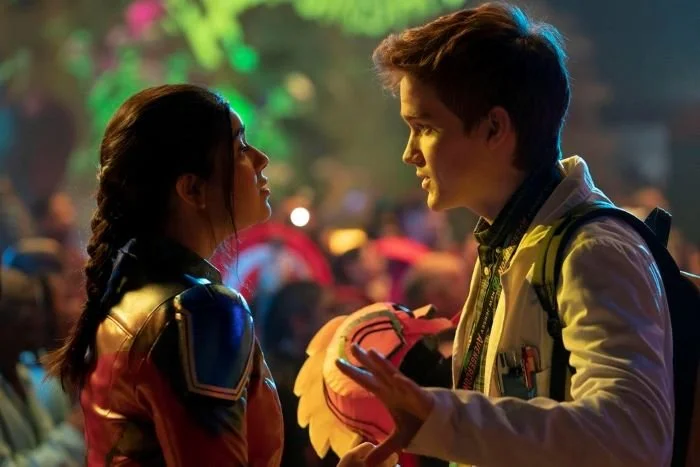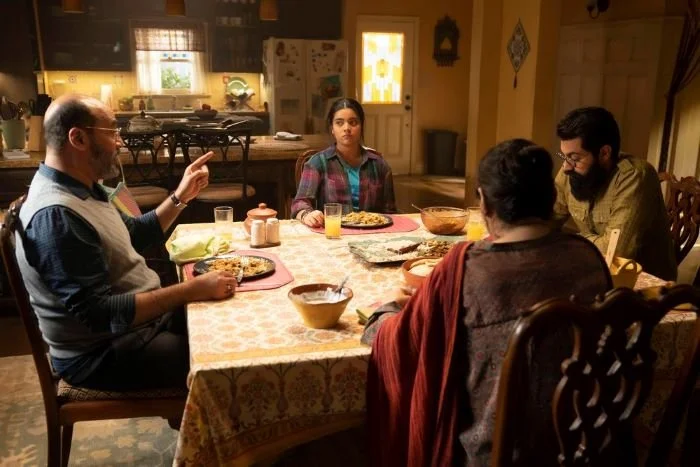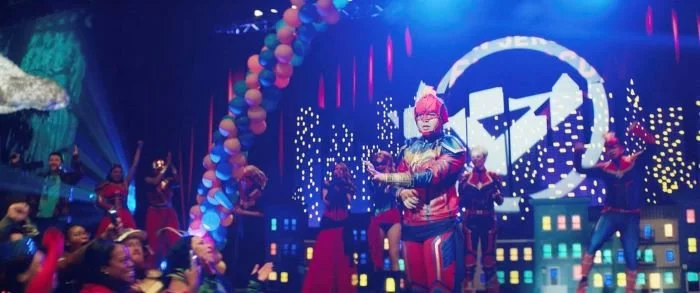‘Ms. Marvel’ Episode 1 Spoiler-free Review: Marvel’s Heart Gets A Jumpstart
To say that Ms. Marvel’s debut has been anything shy of a critical success is an understatement. At the moment, the series is Marvel’s highest scored show on Rotten Tomatoes, which sadly, also coincides with having the lowest IMDb score for a Disney+ series. Certain viewers are not exactly happy about the series. To be honest, they were never going to because of Kamala’s heritage.
A Pakistani-American teenager from Jersey City, New Jersey, Kamala Khan arrived in 2013 in one of the most controversial reimaginings in Marvel comics history that saw a Muslim girl replace a longstanding white superheroine. She came during the transitive era of Marvel comics which included a relaunched Captain Marvel in 2012 that retconned Carol Danvers into the heroine everyone has come to know in the Marvel Cinematic Universe (MCU), along with Hawkeye: My Life As A Weapon (2013), created by Matt Fraction and David Aja in 2013, which would later be the template for Kate Bishop and the Hawkeye Disney+ series.
RELATED:
Kamala Khan’s Ms. Marvel is the franchise’s first-ever Muslim featured superhero and is arguably the most popular Muslim superhero ever created. Critics praised Kamala's genuine earnestness, fangirl spirit, and above all else, her refreshing authenticity. The creators have drawn from their own experiences as a Muslim or a Pakistani. Having spent a large chunk of my 20s in Jersey City, NJ, I was immediately impressed with the diverse portrayal in the series and its embrace of Kamala and her family’s Muslim Pakistani-American roots. It was game-changing to see the portrayal of my close Indian and Pakistani friends that I grew up with in this subsection of New Jersey portrayed. Marvel is closer to home than ever before.
‘Ms. Marvel’ Episode 1 Review: Who Is Ms. Marvel?
Kamala Khan is your typical teenage girl who attends Coles Academic High with her best friends Bruno and Naki. She’s more-or-less an outcast. More than anything, Kamala is one of the biggest fangirls of the Avengers with her greatest hero being Captain Marvel. Her journey shows us what it is like to be a Muslim while trying to fit in. It affects things in her life like her restrictive diet, attending high school parties, drinking alcohol (though I doubt the Disney+ version will address this), and most especially, dating.
The pilot episode is filled with high energy and a lot of Spider-Man: Homecoming vibes. There is a clear parallel between Ms. Marvel and Spider-Man as socially awkward nerds trying their best to fit into high school. Where both fundamentally differ is that Kamala’s stories focus on her family and the balance between embracing her cultural background with her desire to fit in as a regular teen in high school.
The central conflict in the pilot is in appeasing Kamala’s parents. She wants to attend AvengersCon, but her mother does not approve of her Captain Marvel cosplay, which is less conservative than her mother would like it to be. This leads to the common trope of a teenager sneaking out story.
The Best Things About The Pilot
For comic fans, the beginning is visually almost beat-for-beat the first issue of the comic book, which immediately immerses us into the story. From the family dynamic over breakfast to Aamir’s praying, it is a cute beginning that kicks off the series’ humorous tone.
One of the biggest praises of G. Willow Wilson’s run of the Ms. Marvel comics is how it deftly navigates Kamala’s Muslim heritage in the post-9/11 world without breaking into stereotypes. I am glad this is executed well in the pilot. Much like Moon Knight, the series knows how to embrace representation with music and dialogue without pandering. Kamala is just a regular teenager whose family backdrop happens to be Muslim Pakistani-American.
Despite a lot of initial worries about whether newcomer Iman Vellani could pull this off, most critics and I agree that she successfully portrays Kamala Khan with infectious enthusiasm yet clumsy self-assurance. Vellani does a great job showcasing her somewhat uncertain post-high school goals with her parents, friends, and counselor, and of course, exemplifies the teenage struggle to fit in and find purpose.
Visually, the series is marvelous. There is artwork interspaced along the walls and terrains in Kamala’s imagination. The edited backdrop of these scenes is meant to emulate Kamala’s own doodles (she’s a fanfiction writer/drawer in the comic) and puts a lighthearted tone to almost every scene in the series. On top of this, the soundtrack slams in a contemporary way. The cinematography features some creative motion shots with fewer large-scale battles and more intimacy. These elements make it feel like watching an indie movie.
The biggest thing everyone is talking about in the series is AvengersCon, which features a slew of Easter Eggs and, again, a lot of love for Marvel fandom. This is exactly why fans love Ms. Marvel.
The Problems About Where It Is Different From The Comics
The biggest series change is the bangle gifted by Kamala’s grandmother. In the comics, the Terrigen gas is what grants Kamala her stretchy and shape-shifting powers. It is a convenient way to avoid the Inhumans storylines and all the negative critiques of the series.
Because the comic version of Ms. Marvel shares a lot of similar abilities with the Fantastic Four’s Reed Richards, the showrunner understandably has to find a unique to present her skills with an entirely different power set. The problem with this, however, is that Kamala’s stretchy powers involve shape-shifting abilities, which was an important theme in the original comic run. Her strange turn of shape-shifting into Carol Danvers in the comics presents powerful themes of body dysmorphia, transracial identity, and really an outright commentary on what it is like perceiving yourself as a powerful white woman versus an awkward Muslim girl. It pertains to the cultural and racial relevancy, conflicts, and struggles seen today. It is unclear if the series will be able to address all these issues without Ms. Marvel’s shape-shifting powers.
Why You Should Watch ‘Ms. Marvel’
Watch Ms. Marvel if you love Marvel’s brand, as Kamala’s voice is such a genuine love letter to fans. While you are there, enjoy her jumpy art sketches, endless imagination, and really, just this story of this young Muslim Pakistani-American superhero and her family. Most importantly, check out the pilot for yourself to see if it’s for you.
As of right now, the series is being review bombed on IMDb, just like The Boys for its one-episode-a-week model, and Obi-Wan Kenobi for Moses Ingram’s portrayal of Reva. It’s difficult to sort through what’s fact versus what’s noise, so maybe, just give the series a shot and see it for yourself.
READ NEXT:




